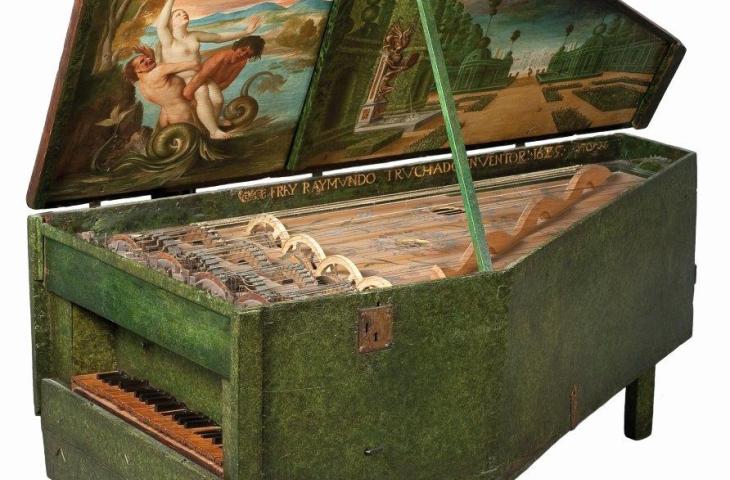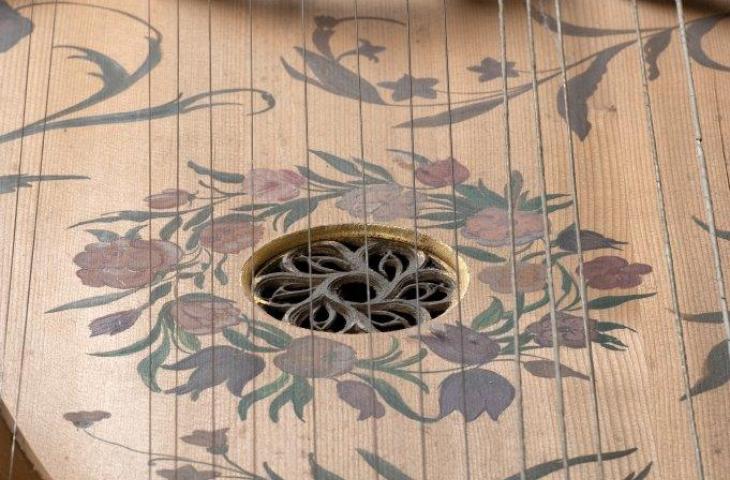Geigenwerk

Geigenwerk, Attributed to Raymundo Truchado, Toledo?, 1625, inv. 2485
Geigenwerk

Geigenwerk, Attributed to Raymundo Truchado, Toledo?, 1625, inv. 2485
The Geigenwerk is one of the rare instruments with strings and keys capable of sustaining a sound. The strings are not plucked as in the case of a harpsichord and not struck as in the case of the piano. The bowing action is provided by four parchment-covered metal wheels that serve as bow. The wheels are turned by a crank at the back of the instrument, the player bringing the strings in contact with the turning wheels by pressing the keys of the keyboard.
There is little information about the origin of the Geigenwerk. Its invention is ascribed to Hans Haiden, who was active in Nurenberg at the end of the sixteenth century. Various European rulers, including Ferdinand II, Ferdinand de Medici in Florence and Philip II in the Escorial are said to have had one.
This Geigenwerk was made in Spain and is the only wholly preserved example. It was previously covered with cloth decorated with a coat-of-arms. It is likely that it stood in the cathedral of Toledo, where it was probably used to accompany liturgical services.